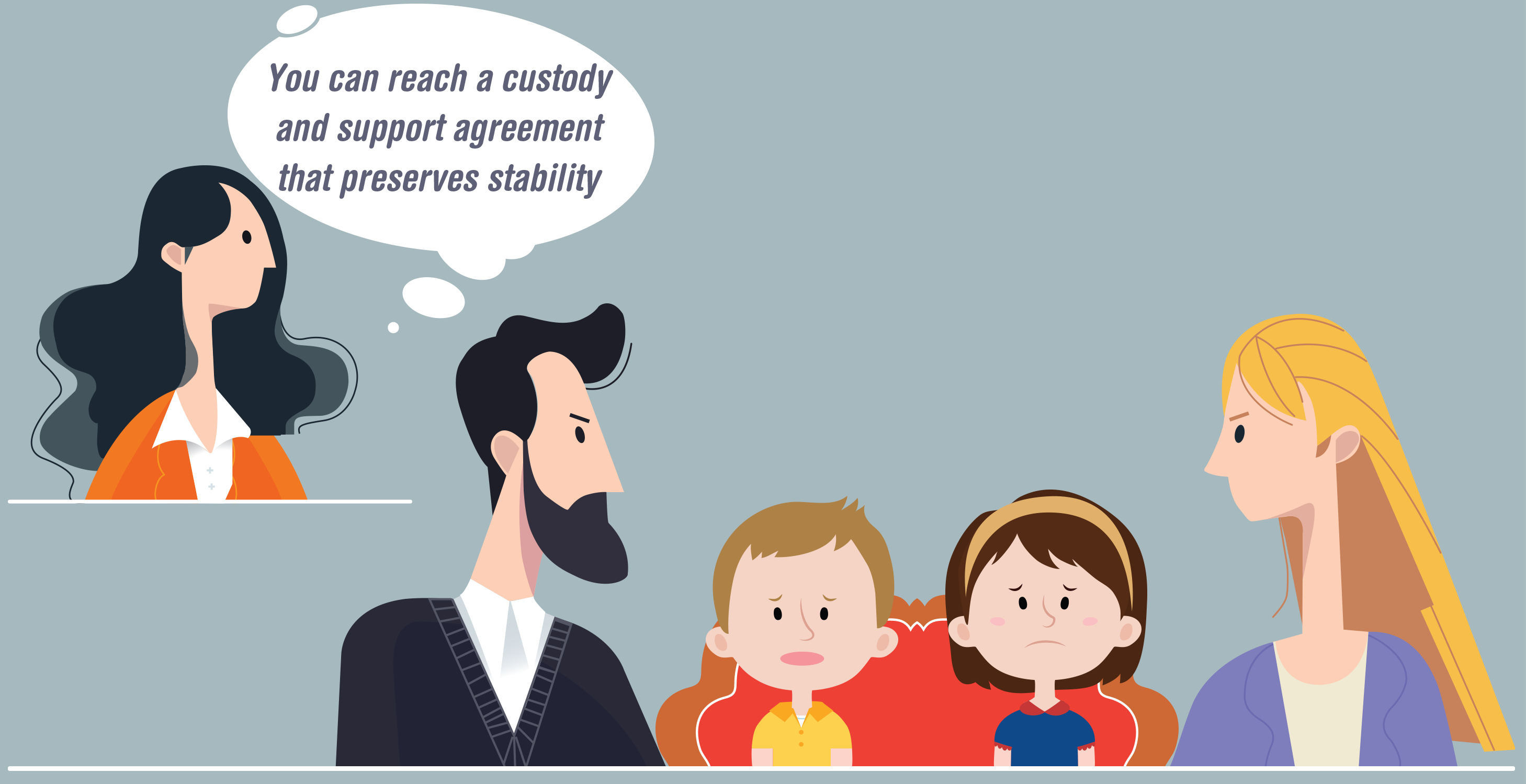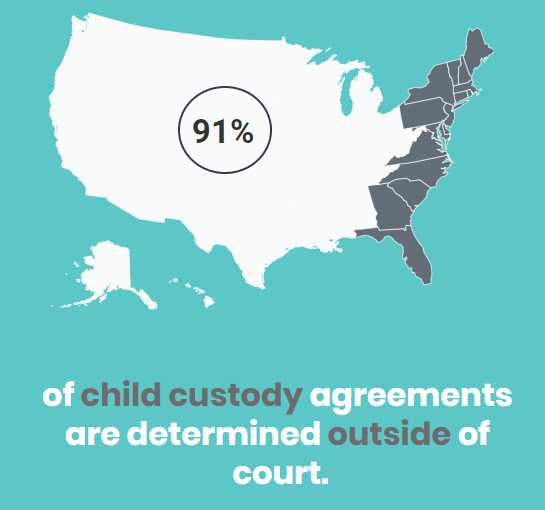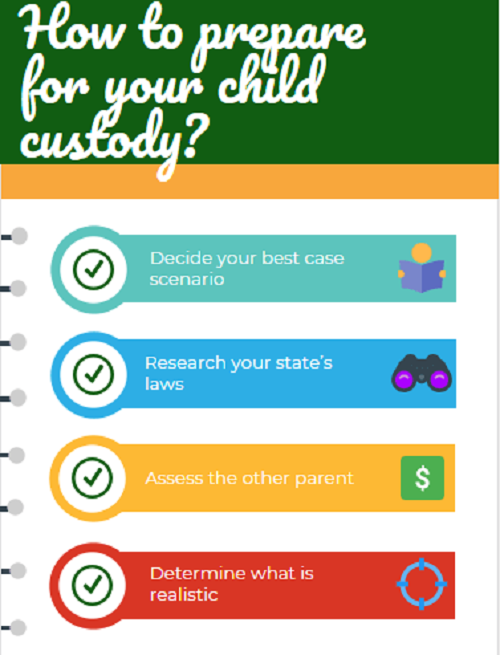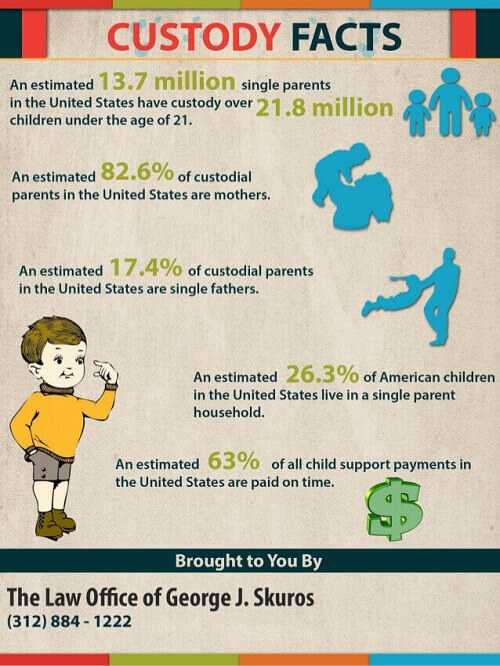Everything You Need to Know About Child Custody and Support

No matter how bad is your relationship with your ex-partner, always think about your child's stability.
If divorce is the solution to end the relationship, that's OK. But think about using mediation to reach a child custody and support agreement.
How to proceed? How it works?
OK, let’s dive right in.
- The decision to divorce: it’s yours not the child’s!
- What is child custody? Let’s agree on the basics
- How To Resolve Your Child Custody? In the family court? Out of court?
- How To Prepare For Your Child Custody Mediation? What questions to ask during child custody mediation?
- What is child support? What Does Child Support Cover? And who pays what?
1. The decision to divorce
The decision to get divorced is never easy. We all picture a certain life for ourselves, and when things don’t work out, it can be difficult to accept.
Many couples going through divorce use mediation to ease the process. Nearly 90% of mediated divorce cases have settled successfully. And, more than two-thirds of couples are satisfied with the process.
When children are involved in a divorce, it adds a layer of complexity to the process that deserves special attention.
Finding a way to reach a custody and support agreement that preserves stability is one of the most important things you can do during this tumultuous time in your life.
You may like to read: A Comprehensive Guide to Divorce Mediation.
2. What is child custody?
Child custody determines the rights and responsibilities each parent maintains regarding their children.
During a marriage, both parents automatically share 50% of all rights and responsibilities. But during divorce, either the parents or the courts must come to a decision about how custody will be divided.
The parent who takes primary custody is referred to as the custodial parent. The most recent stats indicate that there are currently 13.4 million custodial single parents living in the U.S.
2.1. Types of child custody
Custody agreements may vary wildly depending on the situation. There are several types of child custody agreements:
- Physical custody determines the parent who lives with the child full-time. As mentioned above, this parent is called the custodial parent. In just over half of custody decisions (51%), this is the mother. When a child lives with one parent the majority of the time, the other parent often has visitation or other parenting time with the child.
- Legal custody gives a parent the right to make certain decisions (e.g. spiritual, schooling, social events, sports, medical concerns, etc.) on the child’s behalf. Even in cases where one parent has physical custody, both parents can share legal custody of their children. When only one parent has legal custody, they don’t need approval from the other parent to make decisions for the child.
- Sole custody refers to situations where one parent has sole legal and/or physical custody of a child. This usually occurs when one parent is deemed unfit, often because of drug or alcohol dependency or charges of abuse or neglect. Even when the other parent is fit, sole physical custody (i.e. the child lives in one home more than 50% of the time) is a common arrangement for the sake of stability. Around ¼ of all children under 18 in the U.S. live with one parent full-time.
- Joint custody is an arrangement where parents continue to share rights and responsibilities for their children after divorce. Like sole custody, this can be on the level of physical custody (child continues to spend significant time with each parent), legal custody (both parents continue to make decisions together), or both. This type of arrangement can have significant pros, as it alleviates the burdens of parenting and ensures the ability for the continued involvement of each parent. However, the time children spend in transit must be considered, and parents need to be able to cooperate. Otherwise, they risk keeping children in a negative environment.
2.2. Child custody laws by state
Child custody laws vary by state, so if you wish to defend your claim to child custody, you will need to research the laws that govern the state where your child lives.
2.3. How to resolve your child custody
Child custody can be resolved in many ways. Parents can make the decision alone or with the assistance of other parties, such as attorneys or mediators.
In cases where parents cannot come to an agreement, there is the option of resolving issues in family court. However, in the U.S., 91% of child custody agreements are determined outside of court.

Alternative dispute resolution (ADR) is an umbrella term for any dispute resolution activity that takes place outside of court. These processes can be extremely beneficial in resolving custody agreements, especially when parents are willing to work together to resolve those issues.
- Mediation is a specific type of ADR that is commonly used to arrange custody agreements. It is less adversarial and more casual than court. The mediator does not make any decisions for the family. They are only there to facilitate the agreement between you and your spouse. If you plan to go through divorce mediation, it makes sense to use this method for custody arrangements as well.
- Negotiation is another informal method of ADR parents can use to determine child custody, visitation, and any other issues surrounding the childcare situation. Negotiation can be done with or without the assistance of attorneys.
- Legal counsel may be sought, even when parents decide to form an agreement outside of court. Attorneys can help through the discussion process and give advice about what is legally tenable.
- Parenting agreements are the finalized, signed documents resulting from your agreement. Although most agreements are made outside of court, these documents are often submitted to a judge for final approval. An informal court hearing may follow, so the judge can ask some basic questions about your agreement.
2.4. How to prepare for your child custody mediation
Before starting to negotiate with the other parent, it is important to prepare for likely scenarios.

2.4.1. Decide your best case scenario
What do you want as a result of the discussion? What is the best situation for your child? (These may not be the same when emotions are stressed).
Do you still want to be involved in decision making for your child and their upbringing?
How much time would you ideally spend with your child? Do you want to be the custodial parent?
2.4.2. Research your state’s laws
Although you and the other parent can make your own custody arrangements, it is still important to understand the laws in your state. This will give you an idea of what could happen if negotiations break down.
What facts does a court consider during child custody?
A judge will look at who has previously taken responsibility for the child’s bathing, meals, health care, etc.
The judge will also try and determine what is best for the child.
Some states start with a shared custody arrangement as the starting point of the analysis.
2.4.3. Assess the other parent
Both parents may not have the same capacity to care for a child. Try to objectively consider how a judge would evaluate the other parent’s ability – and your ability – to raise your child.
Are their physical or mental health issues to consider?
Is there a history of drug or alcohol dependency?
Has excessive punishment or emotional abuse been used to discipline your child?
Are you both committed to helping your children maintain a healthy relationship with the other parent? (Judges are weary of parents who try to alienate children from the other parent).
2.4.4. Determine what is realistic
In an ideal situation, you may want your child to spend all of their time with you. You may never want to have to see the other parent again. But you will find that this is unlikely, except in the most extreme cases.
Remember that the other parent is unlikely to agree to impractical arrangements, so try to consider how they feel before presenting a scenario, helping negotiations go smoothly.
3. What is child support?
Both parents are legally responsible for the financial support of their children. And this duty continues after divorce.
There are some exceptions to this.
In 22.4% of cases, the custodial parent cannot afford to pay for necessities and apply for government assistance.
Where parents can pay, child support is an arrangement where one parent pays the other to help cover the costs of raising children.
This should be one of the first things considered when you and the other parent decide to separate. While some things can be decided later on, child related costs will be ongoing during your negotiations, and it will be helpful to know who is covering them.
3.1.What does child support cover?
While some parents mistakenly believe that child support is meant to cover only the child’s bare necessities (e.g. food, shelter, clothing), it is actually meant to cover a broad range of child-related expenses.
Every state has established child support guidelines to help parents discover what they may be required to pay to help maintain their child’s existing standard of living.
- Basic needs include proper food; clothing; and a safe, comfortable place to live.
- Basic medical expenses are usually required to be insured. Often, it is the parent with better employee-covered benefits who will carry these expenses.
- Uninsured medical expenses are any out-of-pocket medical costs. These may include copays, deductibles, surgeries, dental braces, casts, eyeglasses, and any other special healthcare cost.
- Education may be publicly funded, but it’s certainly not free. For a child attending school, costs may include clothes or uniforms, lunch money, tuition, books, a calculator, a computer, and tutors.
- Childcare is a necessary cost when parents are unable to care for children during work. Costs may include daycare, babysitters, nannies, or other fees. For school aged children, this cost may increase during the summer months.
- Transportation is needed to get children from place to place safely. Child support can be used to maintain a car, including gas, car payments, registration and insurance, or can be used for public transportation.
- Basic entertainment is considered a right for children. Computers, television, games, internet, amusement parks, camping trips, and more may be covered under this label.
- Extracurriculars such as summer camps, sports, and other activities that fall outside of school hours and require paid entry can be paid for with child support funds.
- College expenses may be covered by child support in some cases. Many states operate under the notion that a child’s education should not suffer because of divorce or separation.
3.2. Who pays child support?
Usually, the noncustodial parent will pay child support to the parent who has primary or sole custody of the child. However, child support may be ordered in joint custody situations when one parent takes care of the child the more of the time.
Roughly half of the 13.4 million custodial parents in the U.S. (48.7%) have a legal or informal agreement to determine child support.
3.3. Is court required to get a child support agreement?
Although the majority of child support agreements (89.8%) are formal agreements, usually established in court, it is not necessary to go to court.

You and the other parent know more about your child than any court, so if it is possible to reach an agreement outside of court, this is preferable.
Court is also slow and expensive!
But if you need assistance reaching an agreement, mediation is a good first step. A mediator is a professional neutral party who will help you reach an agreement by facilitating communication.
3.4. How is child support calculated?
The amount of child support owed is determined by several factors. These include the number of children, who takes care of the children most of the time, the location of the paying parent, the location of the children, and the annual income of both parents (before tax).
Different regions have different costs of living, so requirements may vary quite a bit depending on where you live.
4.Conclusion: child custody and support mediation
During divorce, it is important to think about the needs of your children first, and maintain as much stability as possible.
Custody refers to rights and responsibilities of the parent.
Custody may be physical (where the child spends their time), legal (how decisions about upbringing are made), sole (one parent is in charge), or joint (both parents are in charge).
How these aspects are legally determined varies from state to state.
Parents may choose to resolve custody alone, through ADR, with the help of an attorney, or through the court system. However, ADR methods are usually less adversarial, less expensive, and less time consuming than other methods, and are recommended as the first step.
Each parent must prepare by determining their ideal outcome based on what’s best for the child.
Part of that outcome will likely include financial support for the child, called child support.
It is important to remember that child support covers more than a child’s basic needs, it covers a variety of costs including entertainment, medical, school, childcare, transportation, and more.
The parent who is responsible for child support is usually the parent who does not take care of the child most of the time. And the amount of support owed is determined by income, location, the number of children, and which parent is the primary caretaker.
Looking for more help with your child support & custody agreement?
Find a trustworthy child custody mediator in your area with the MediatorSelect directory, and ask them for more information.
If you have any questions or helpful tips for parents trying to reach a custody agreement, leave them in the comments below!



